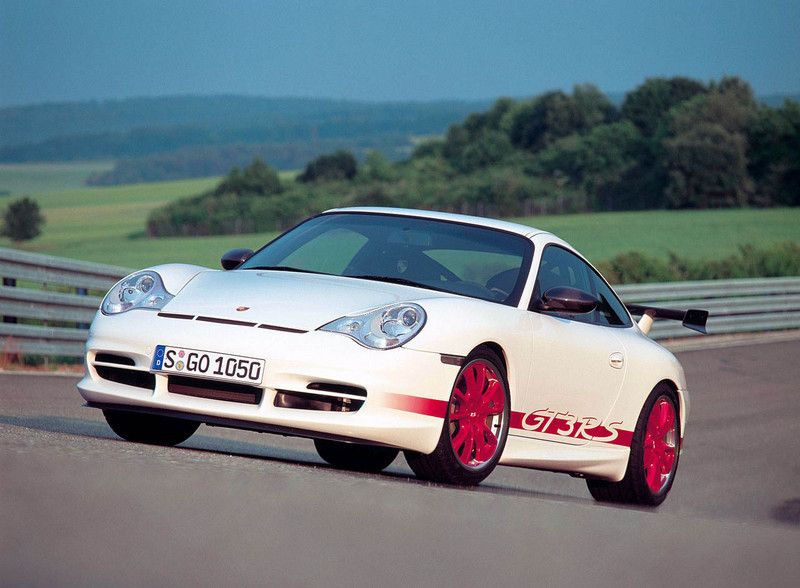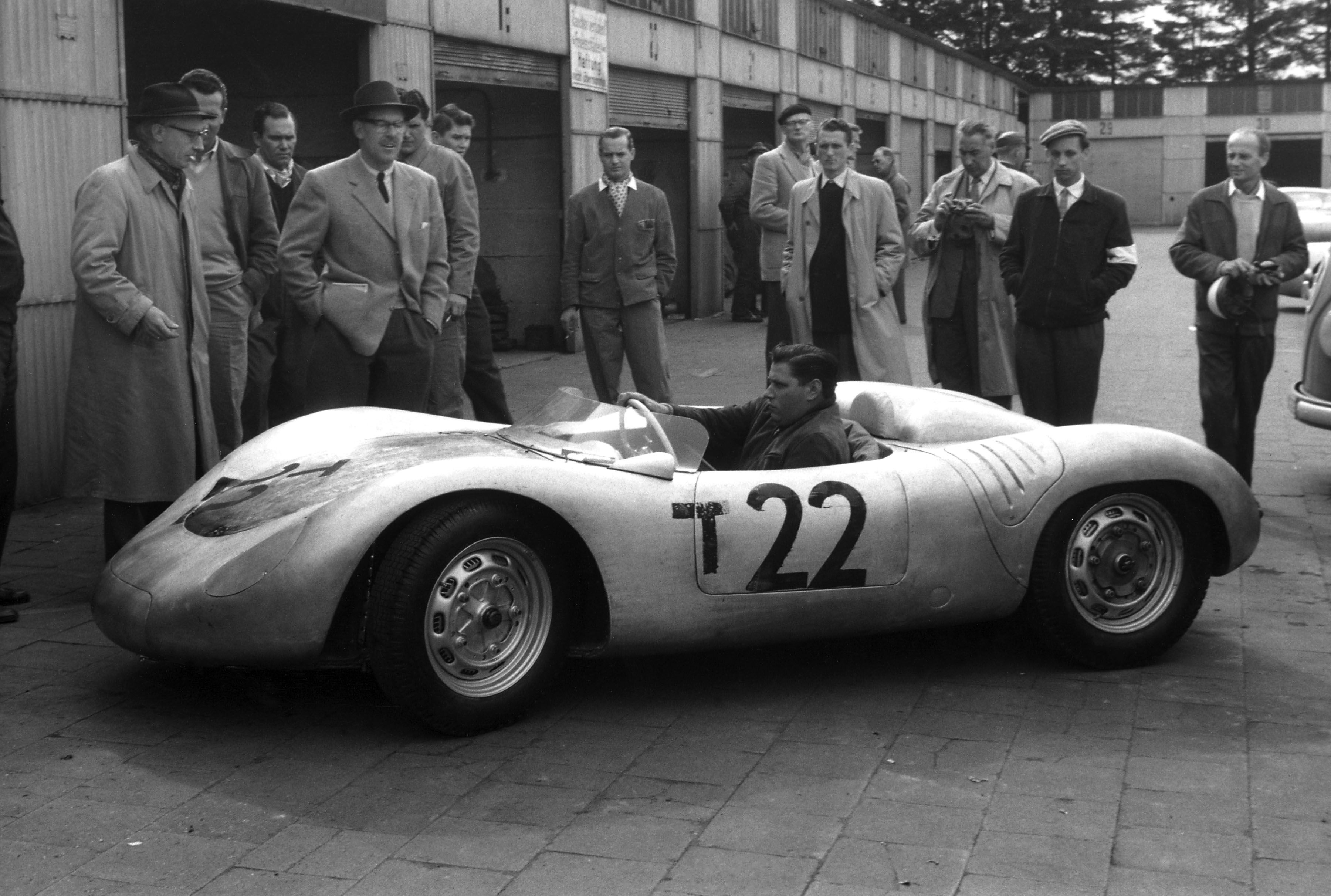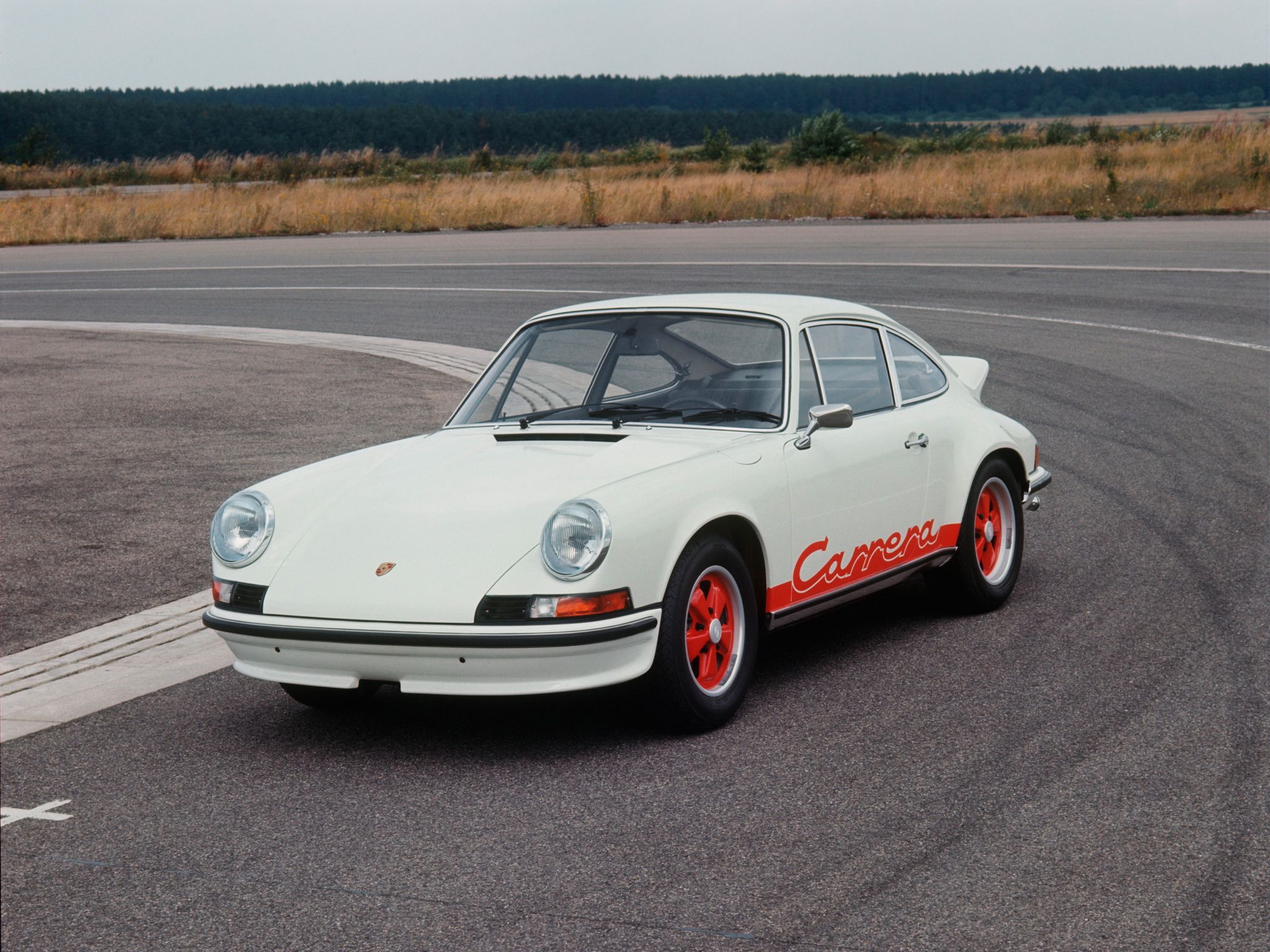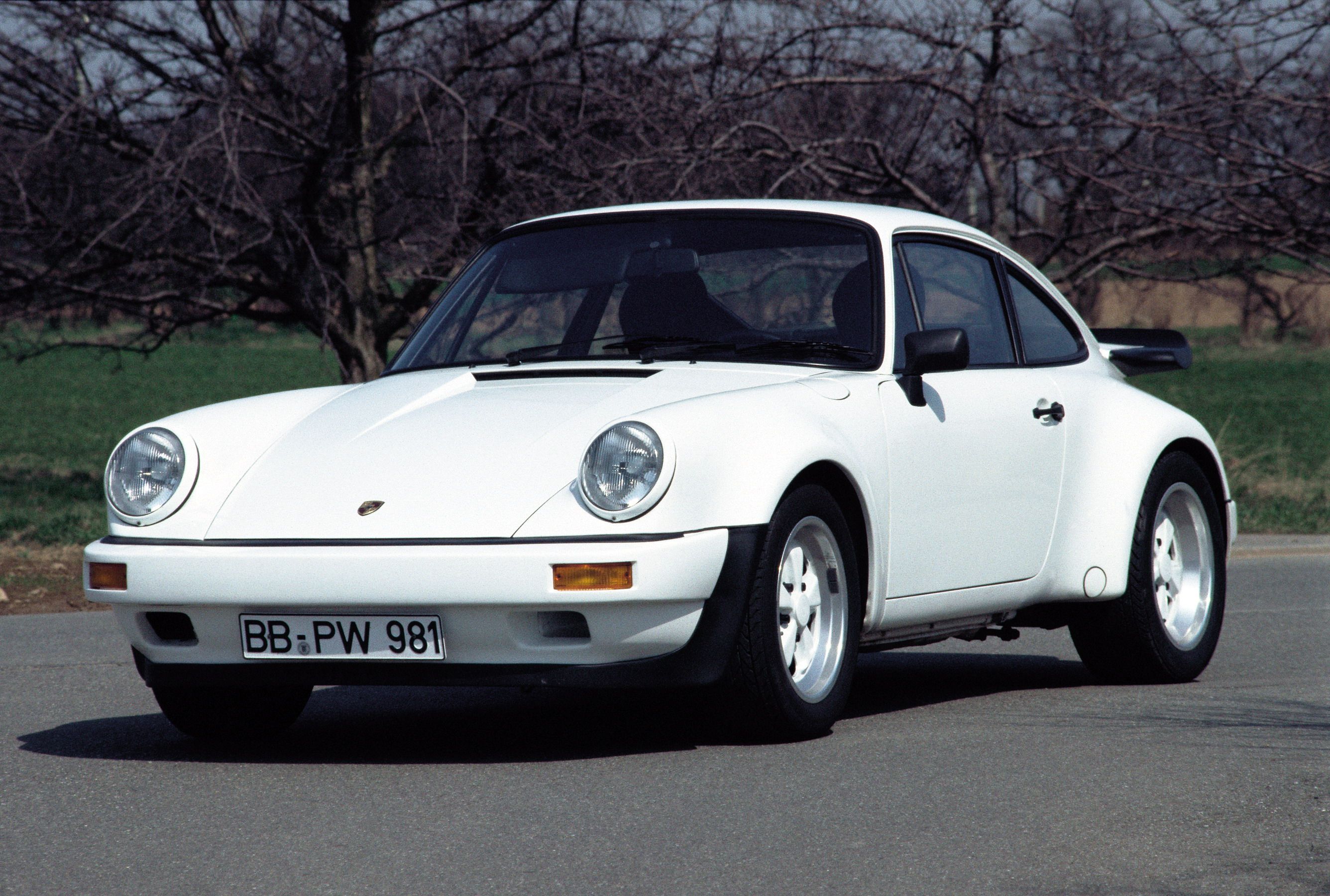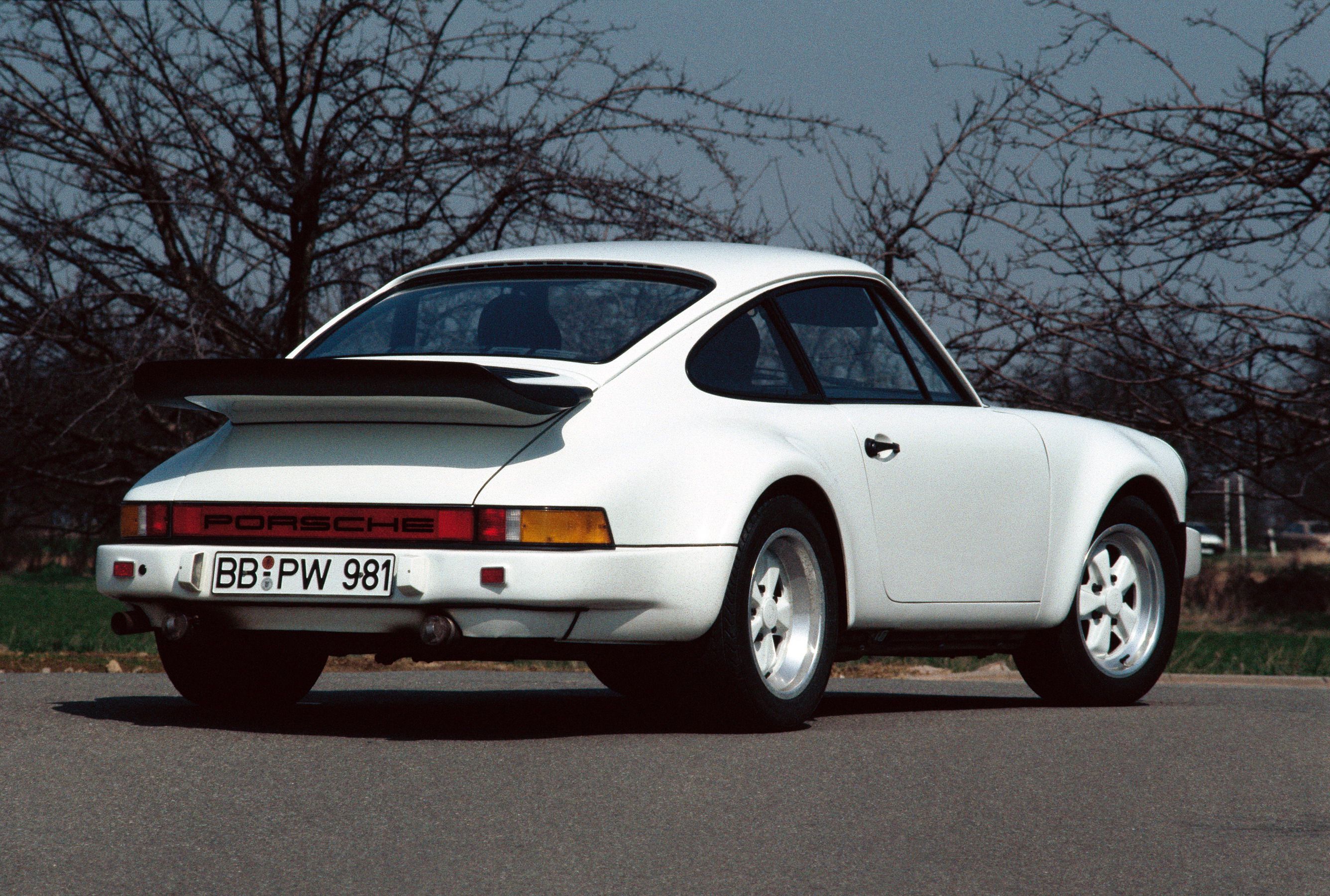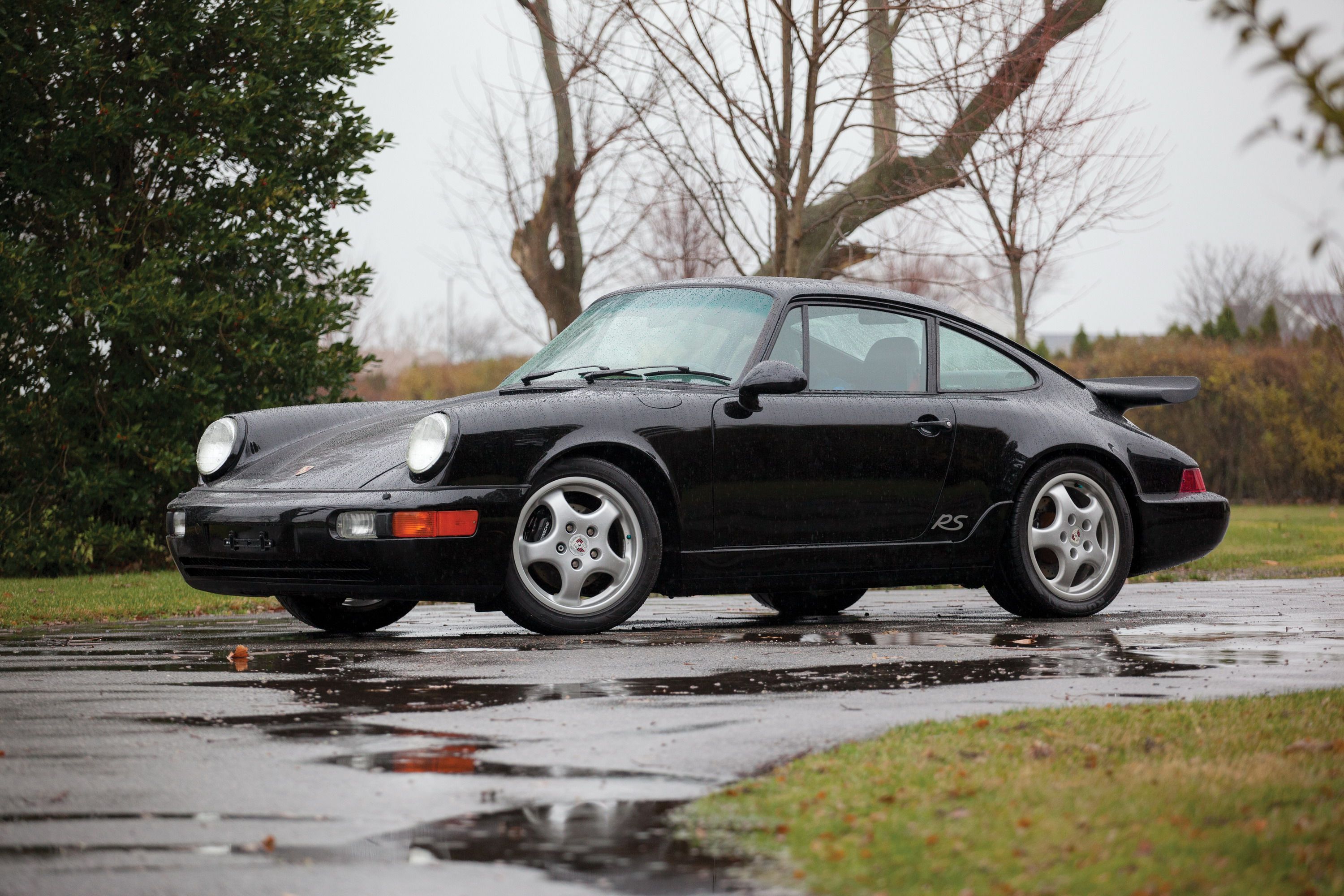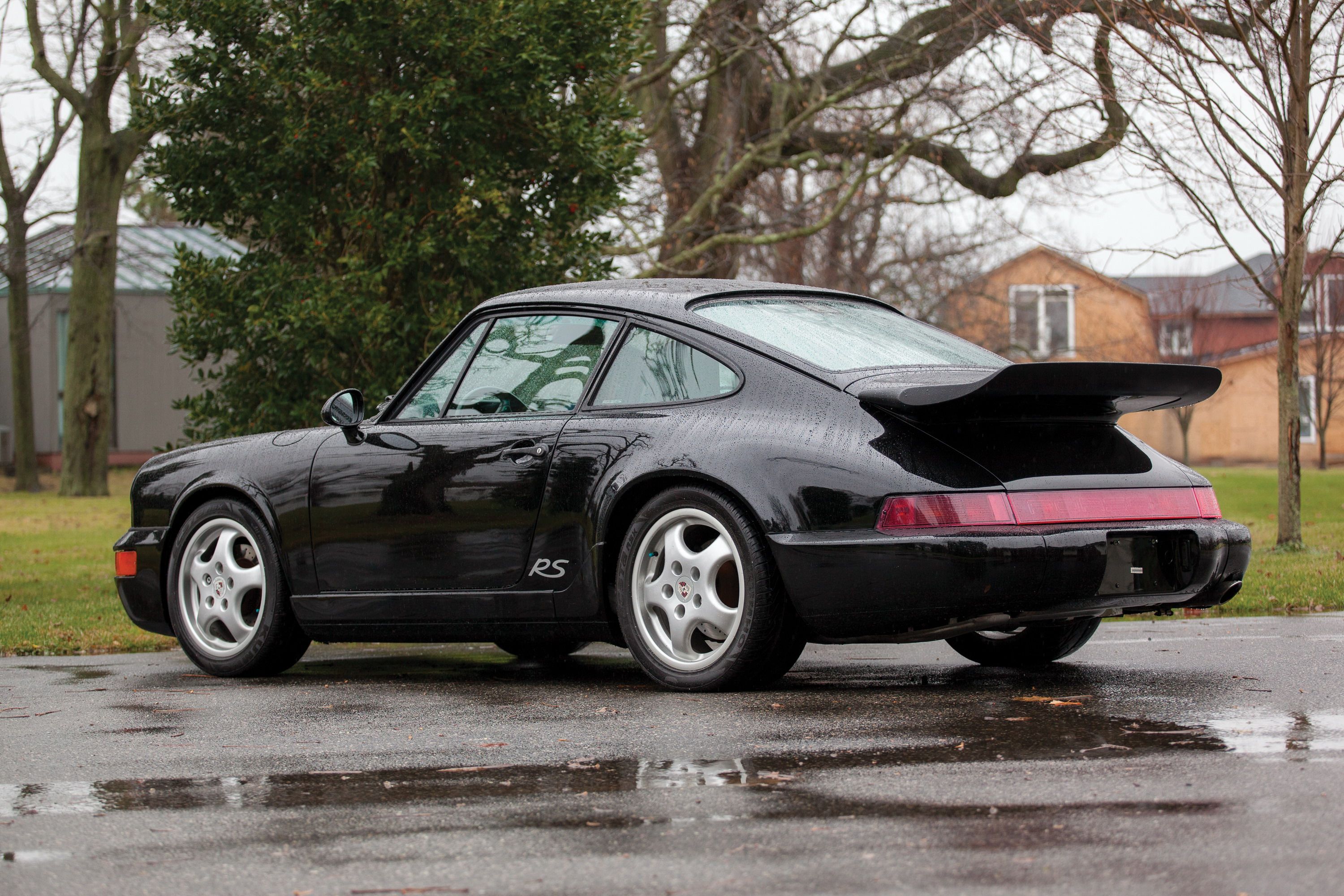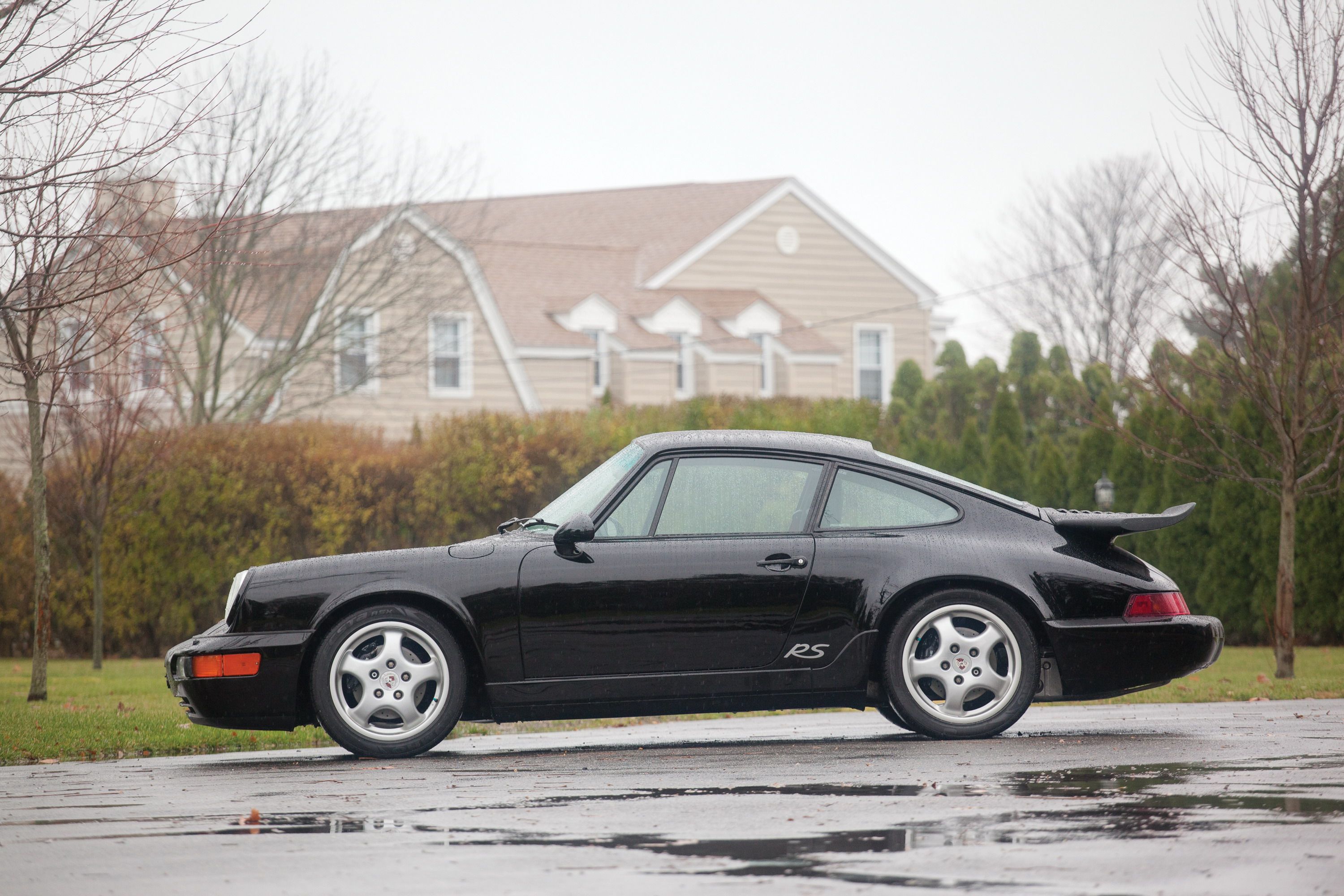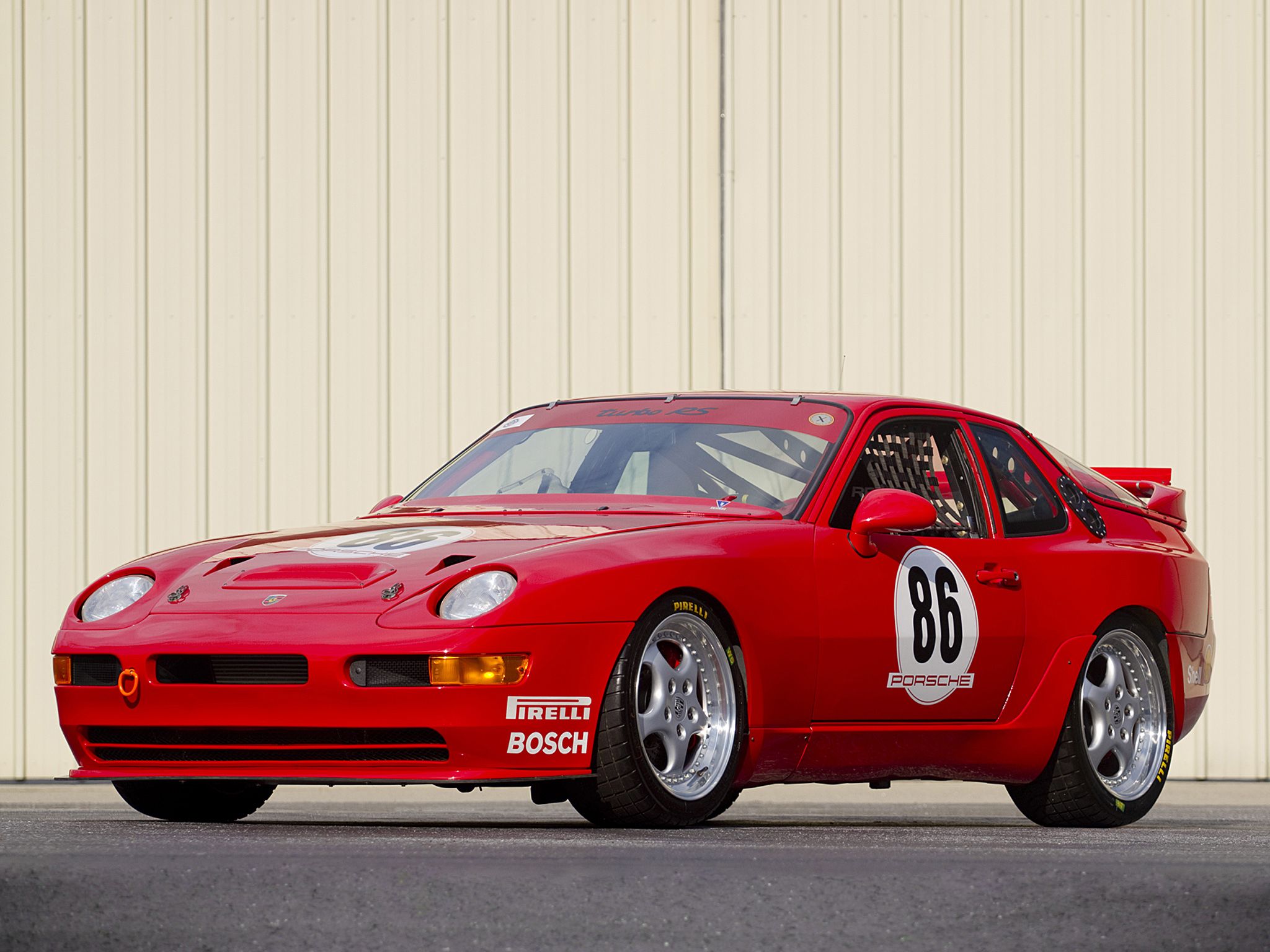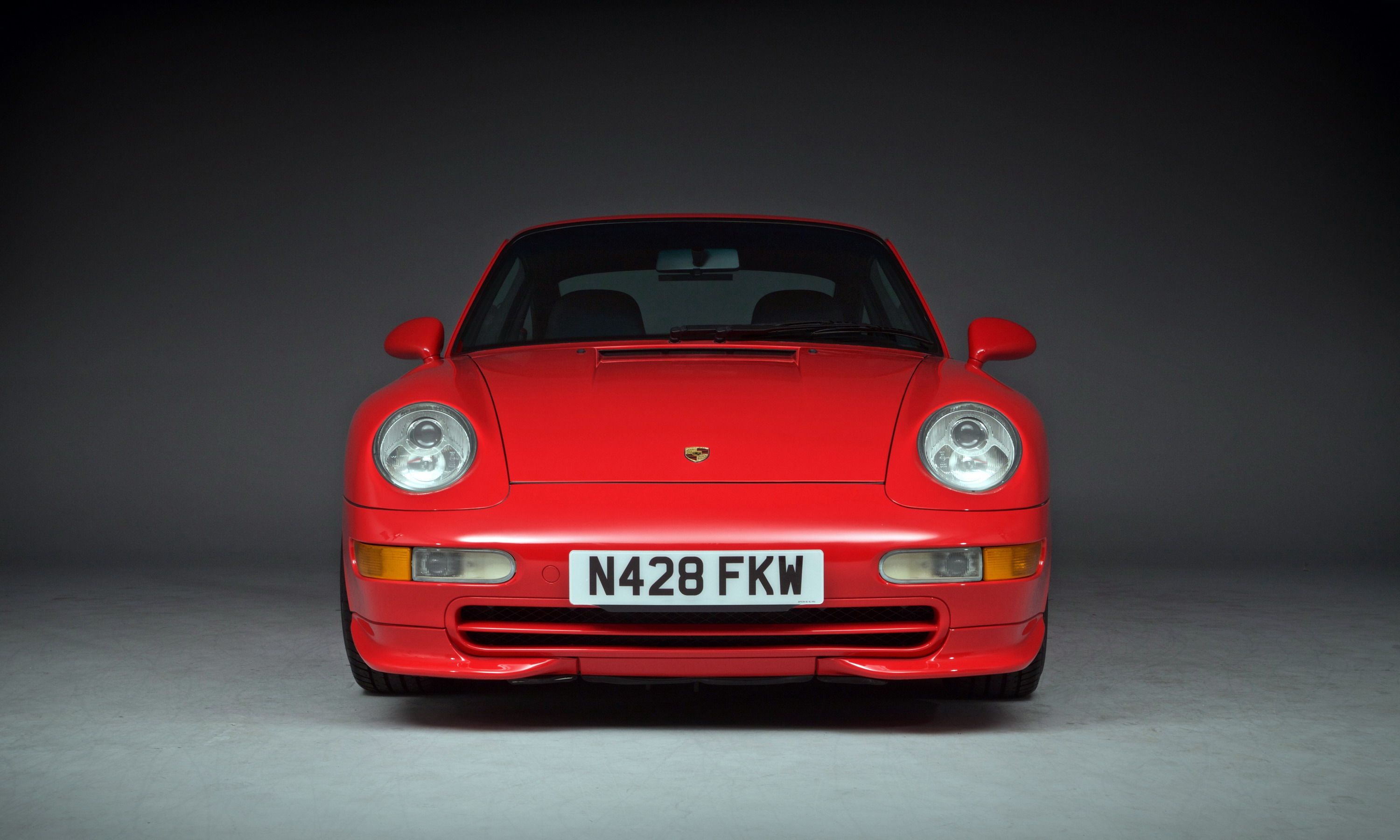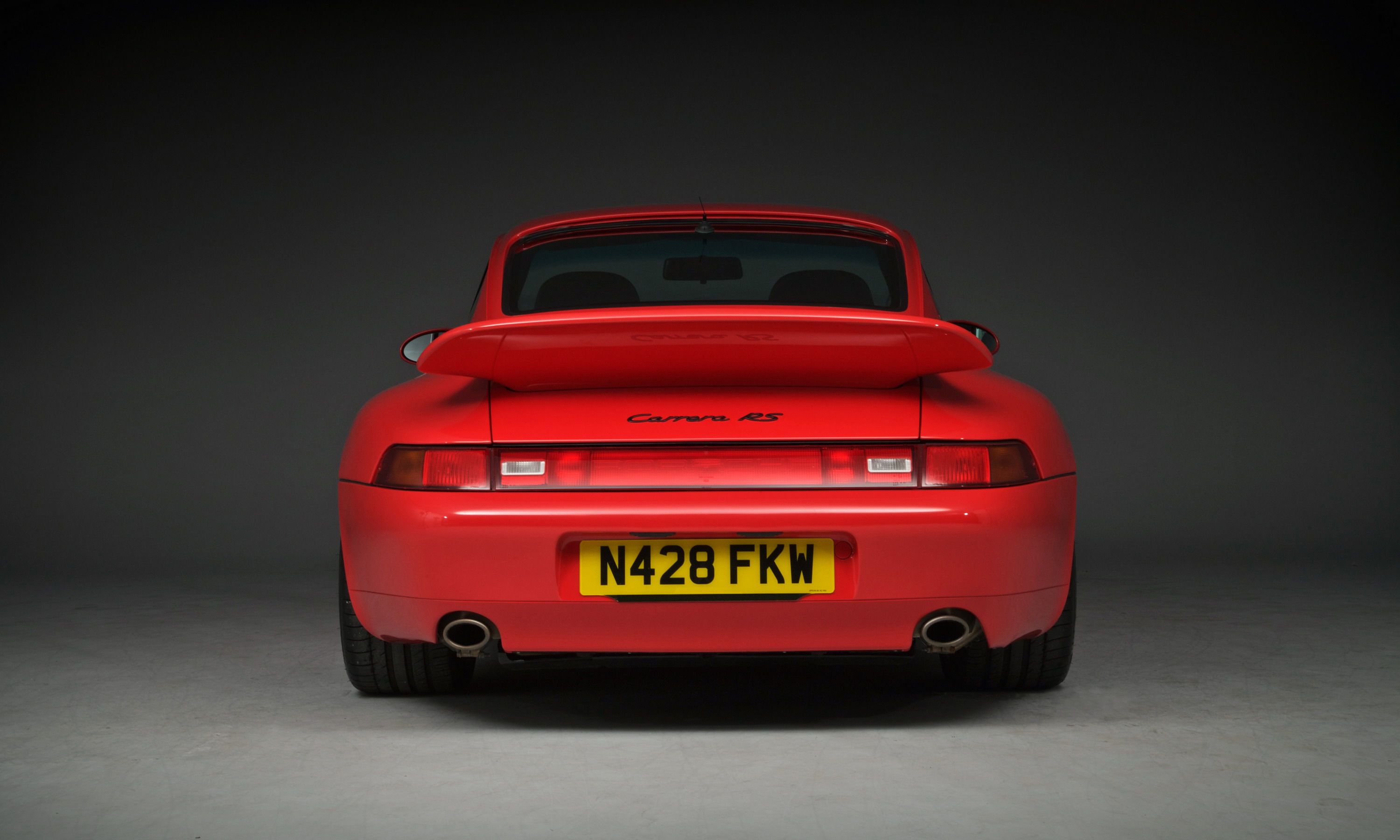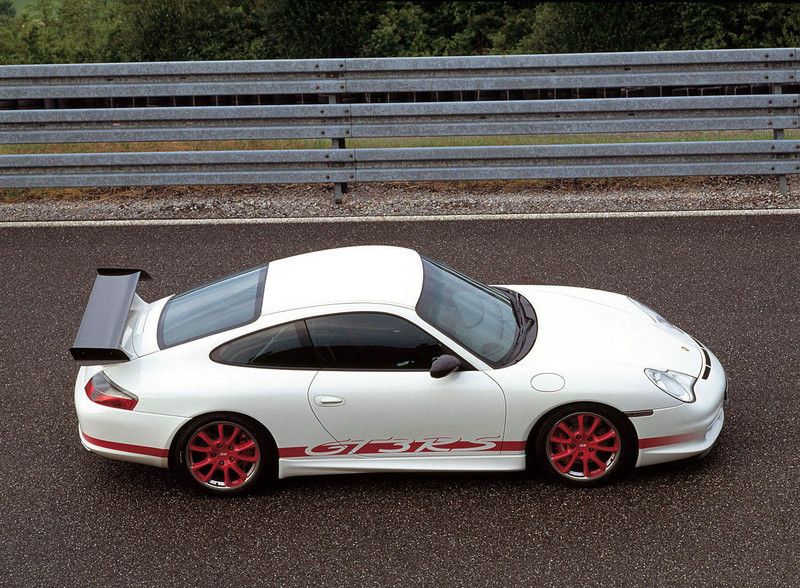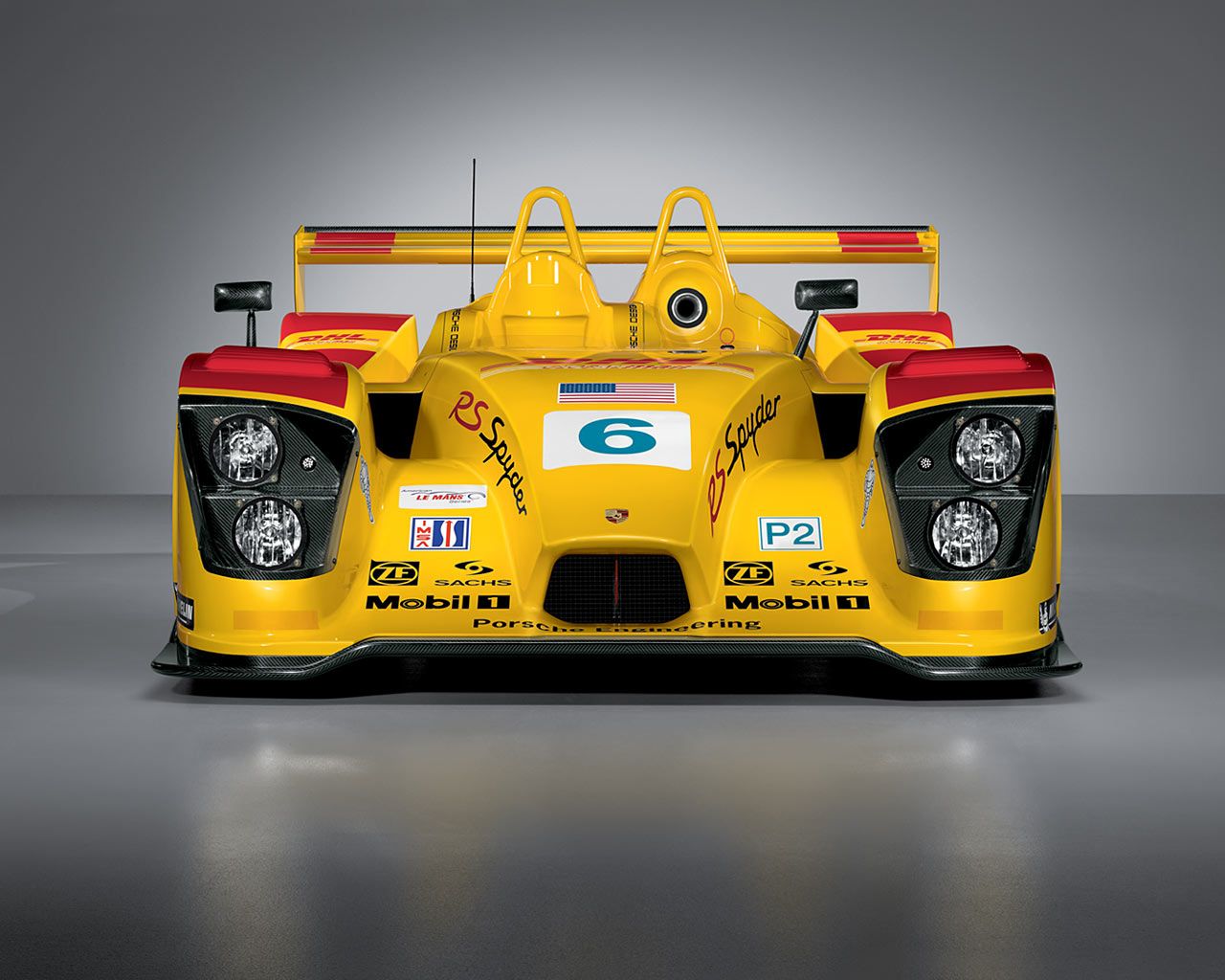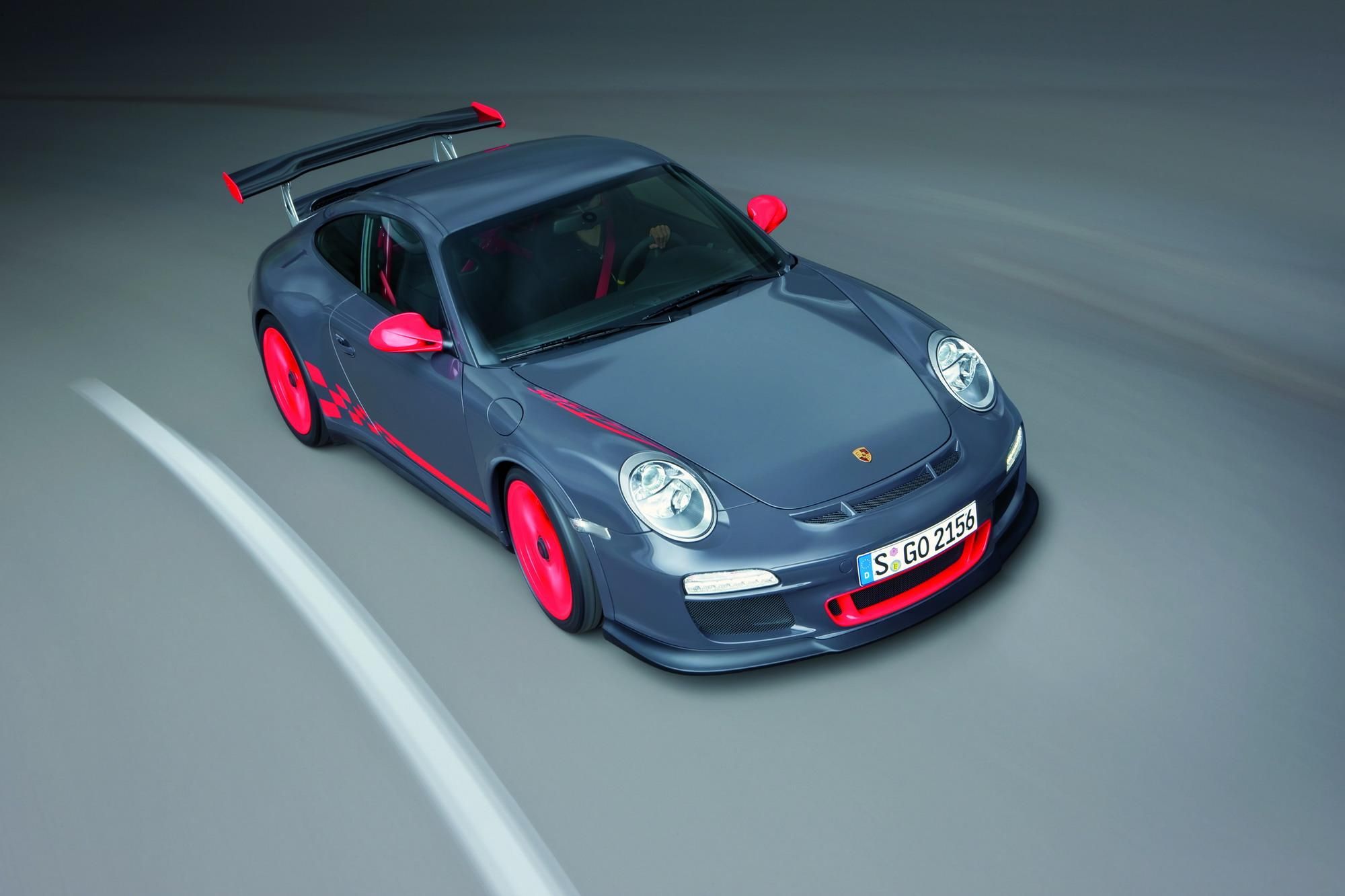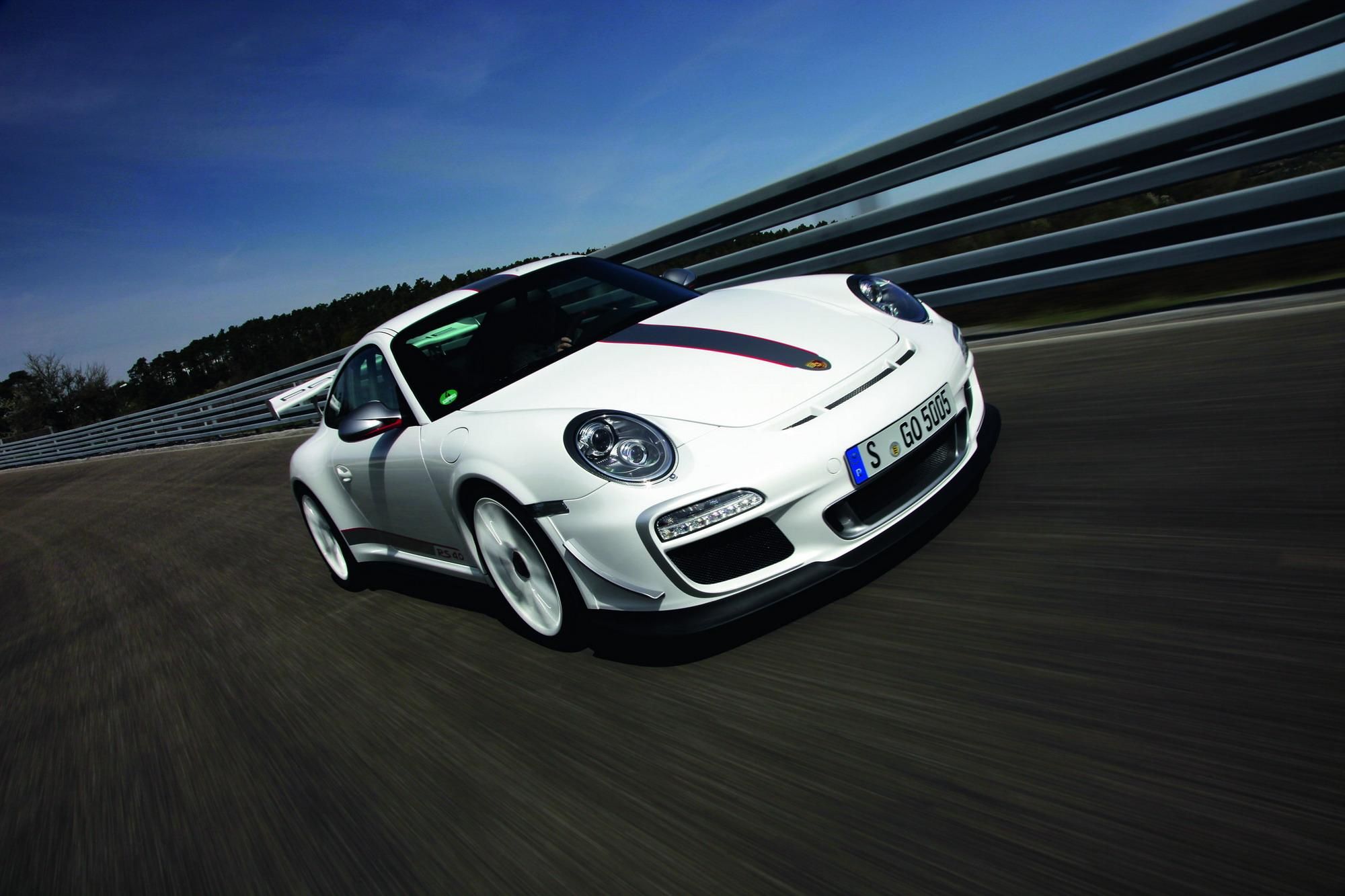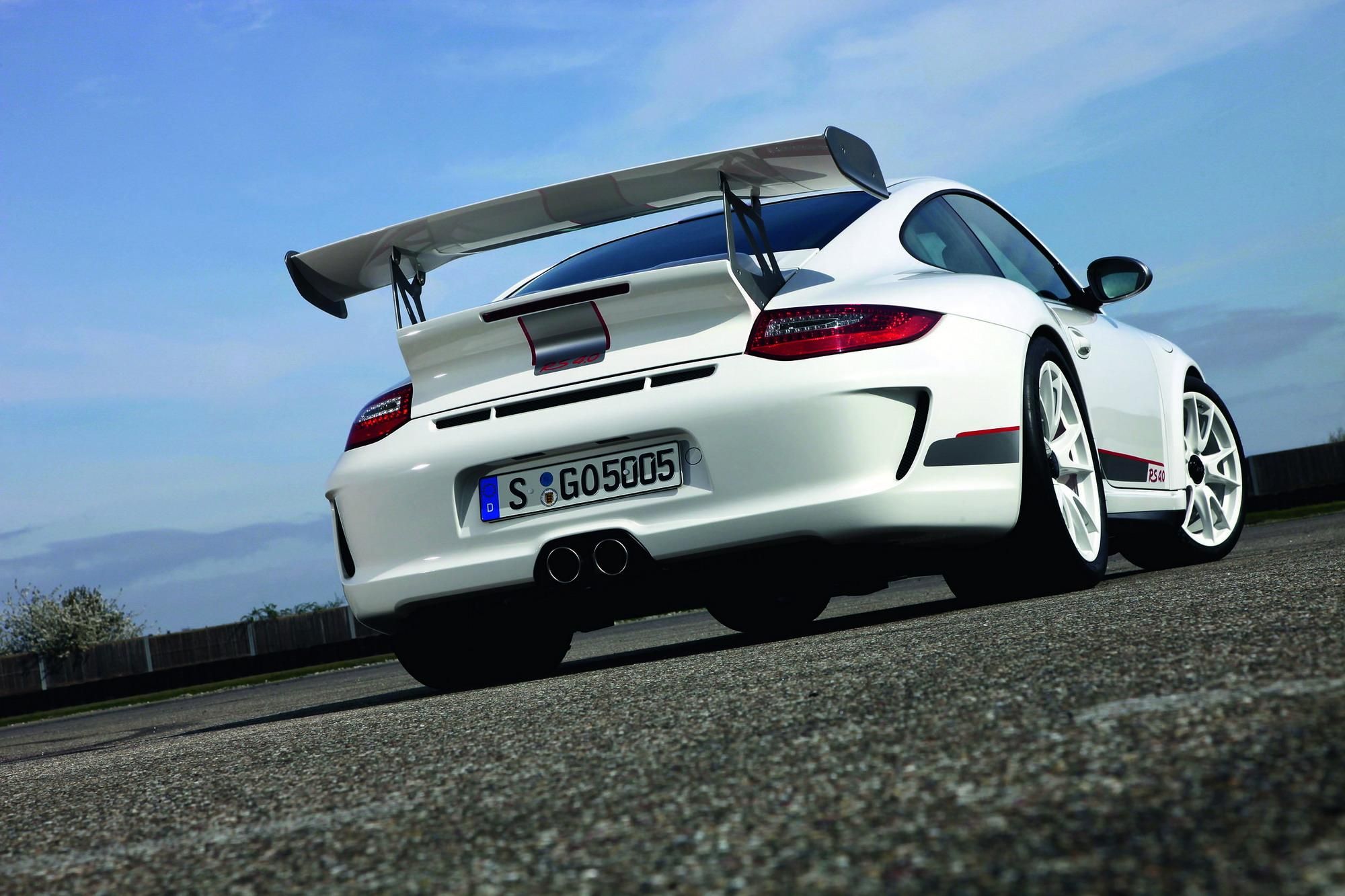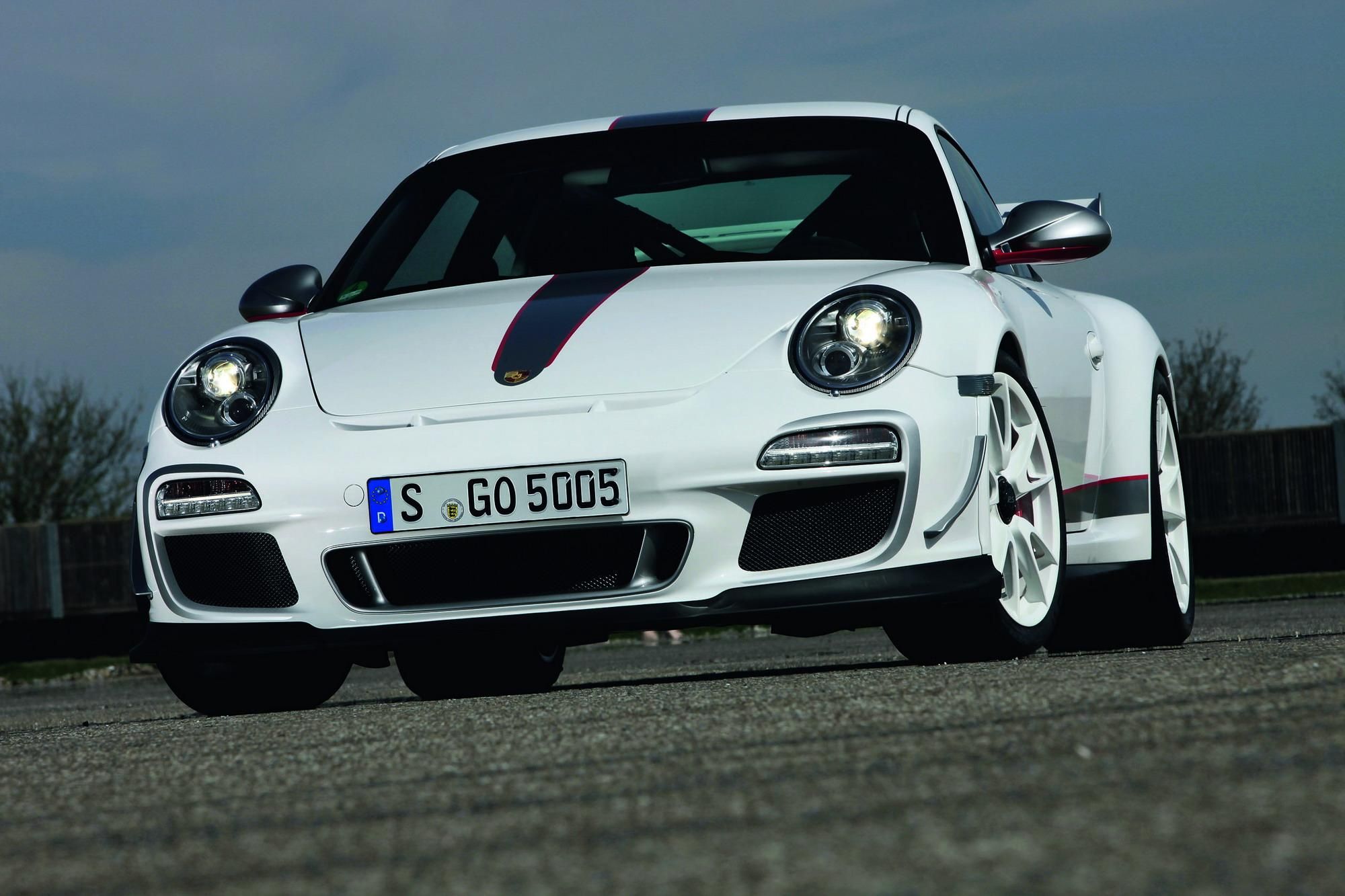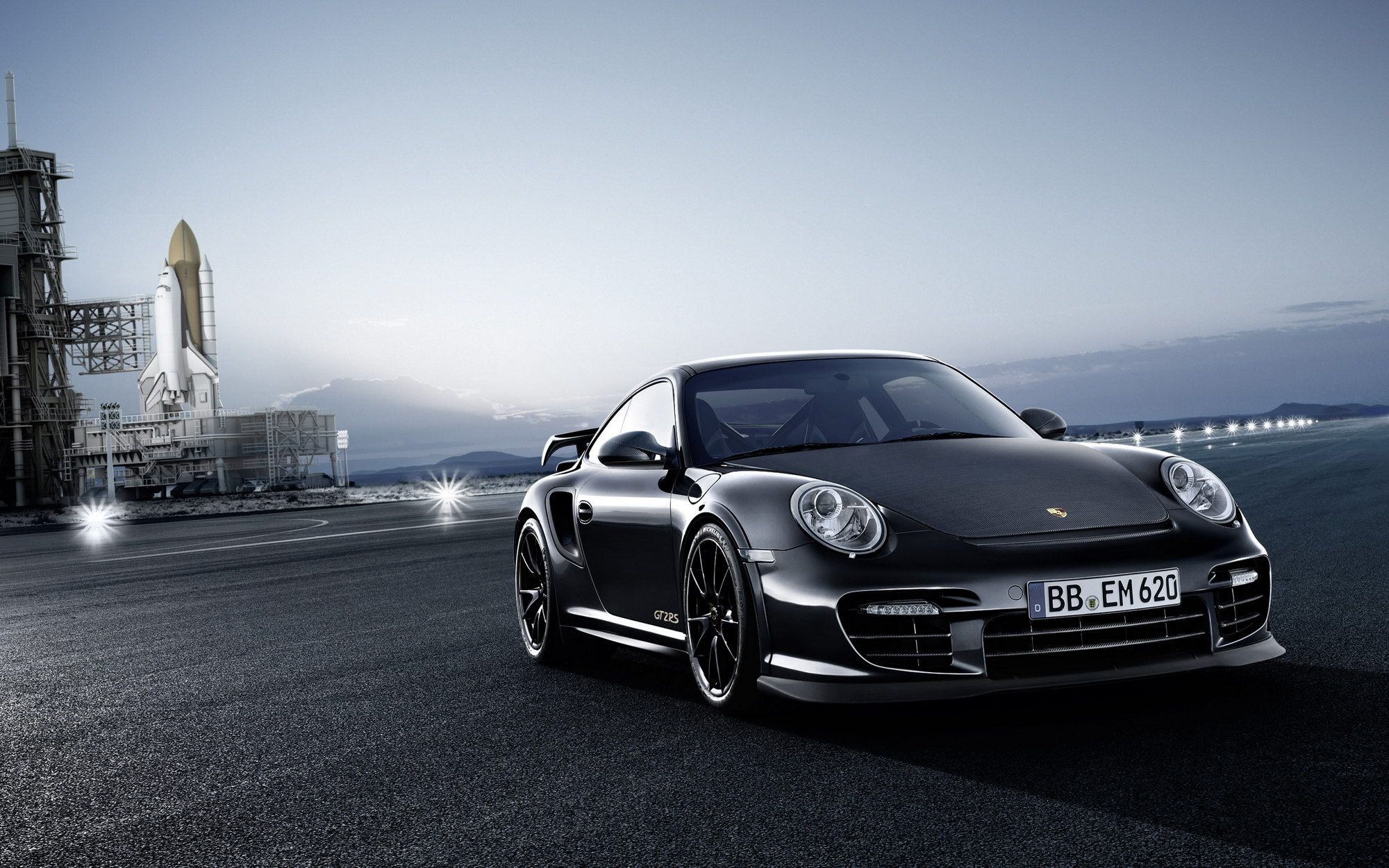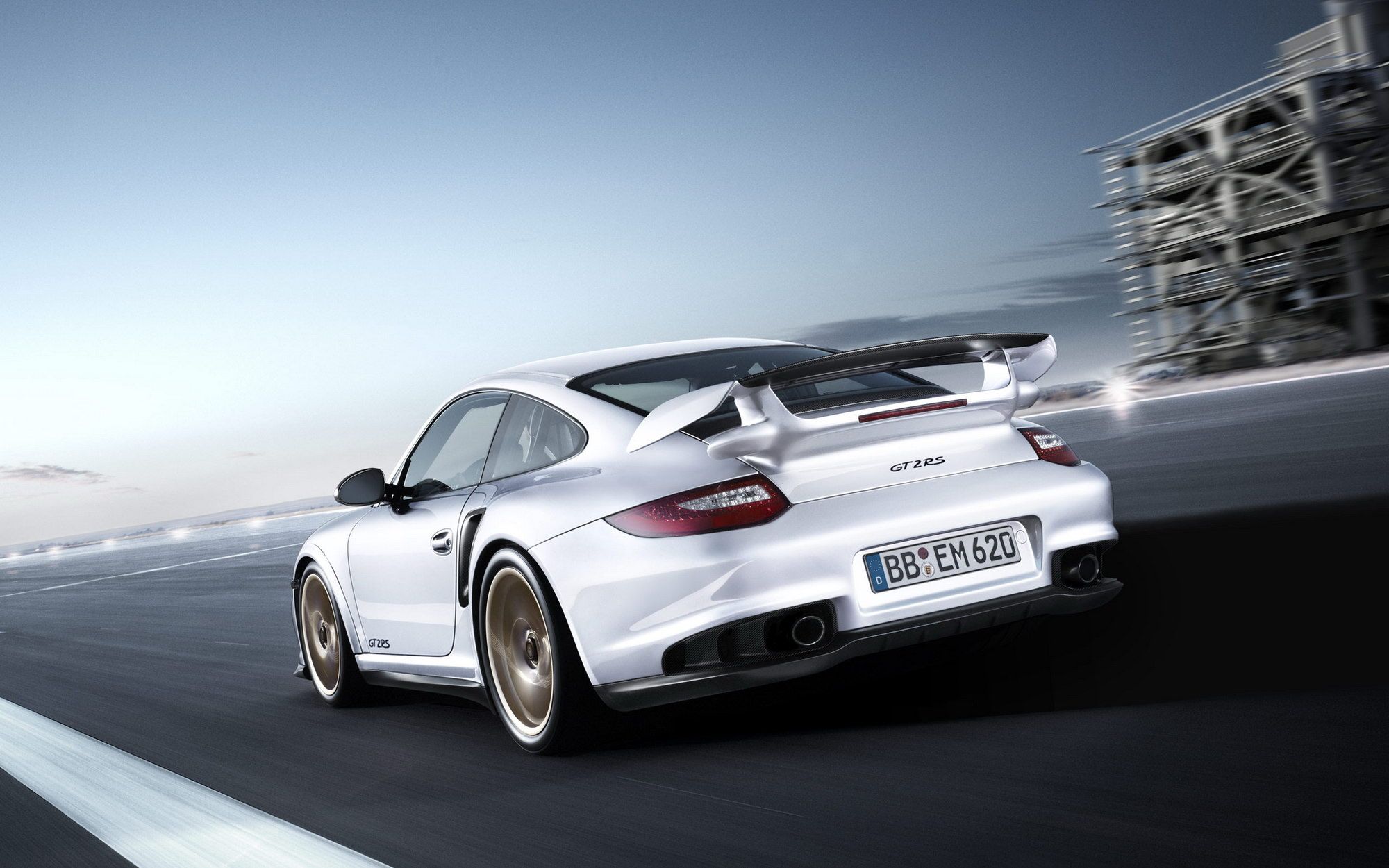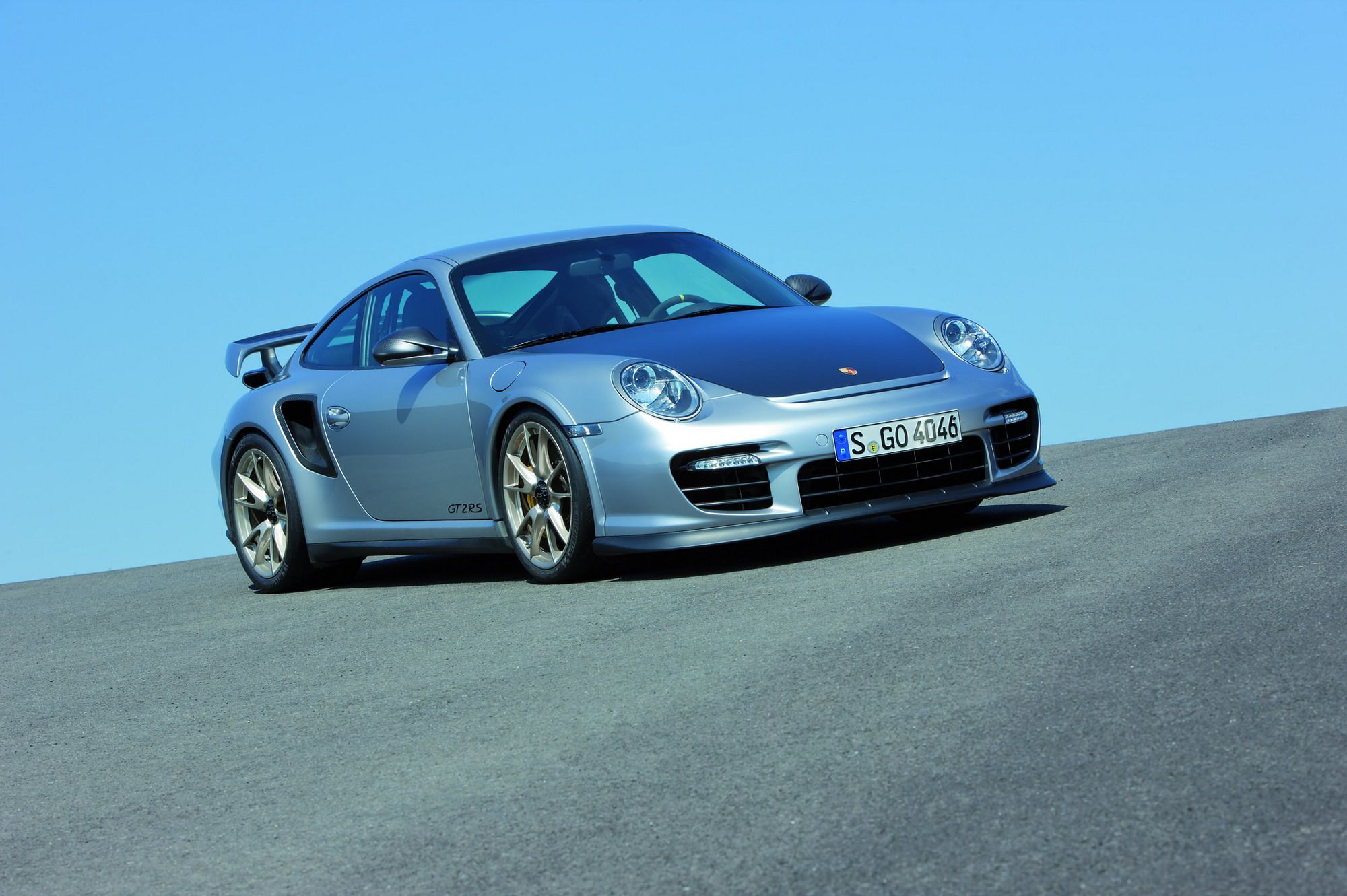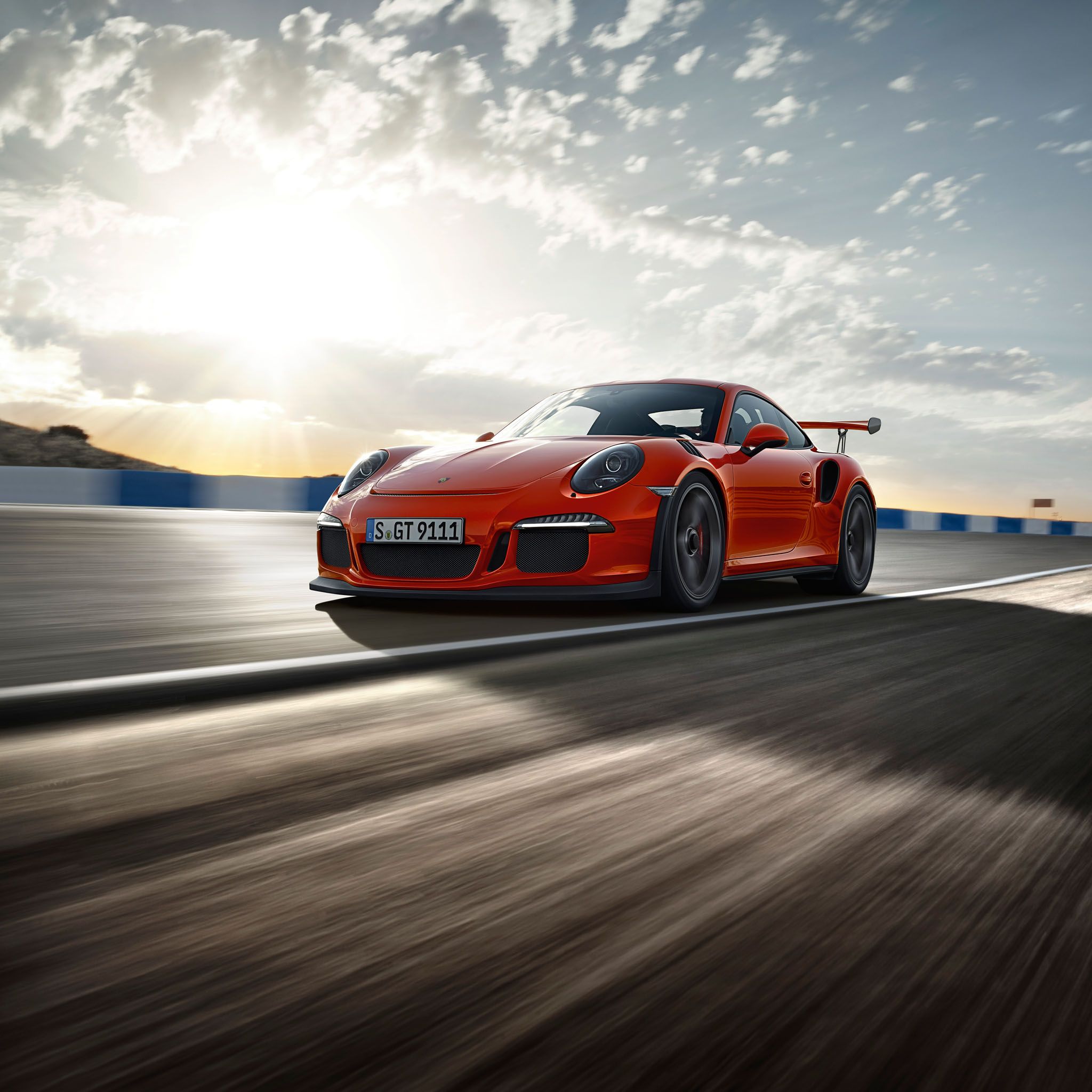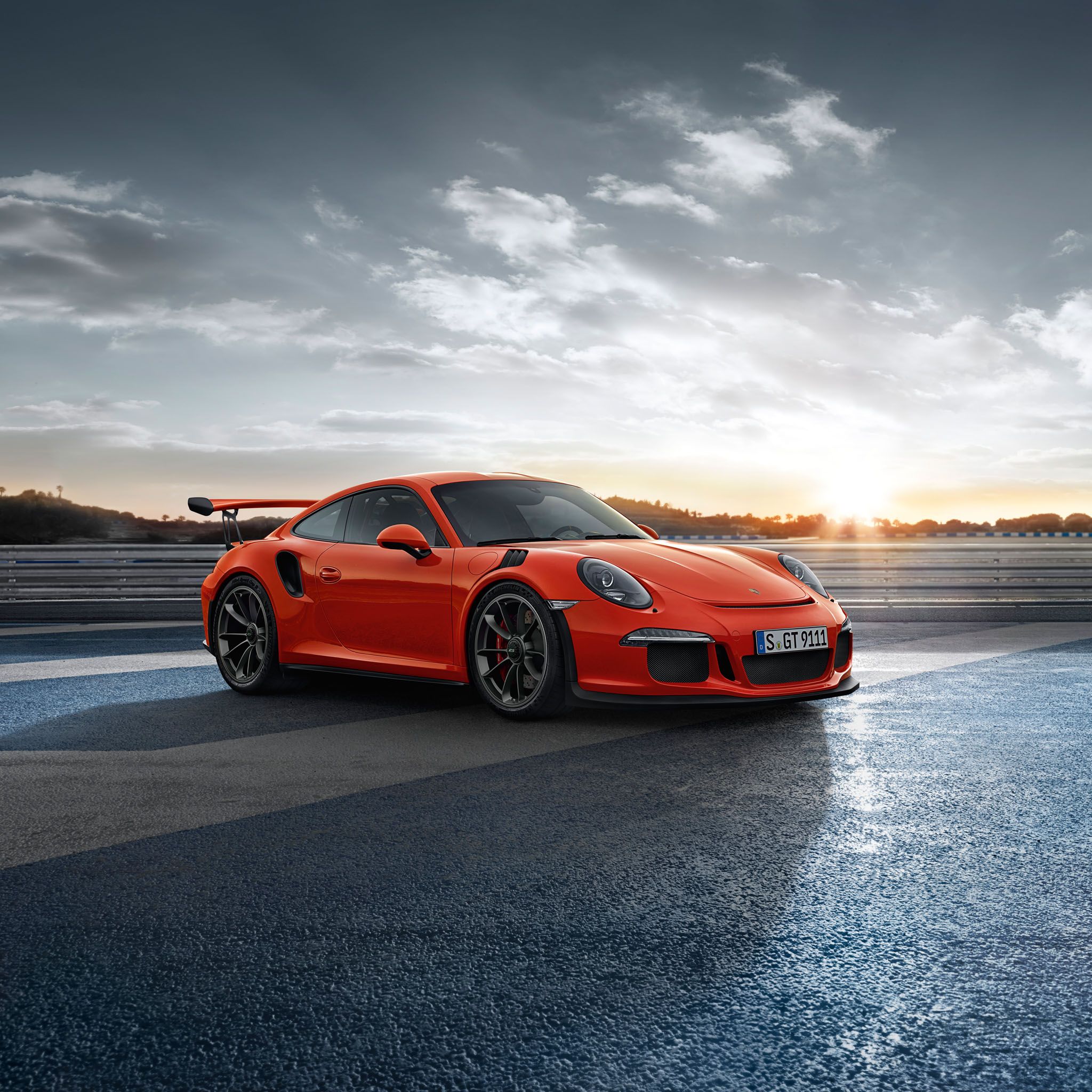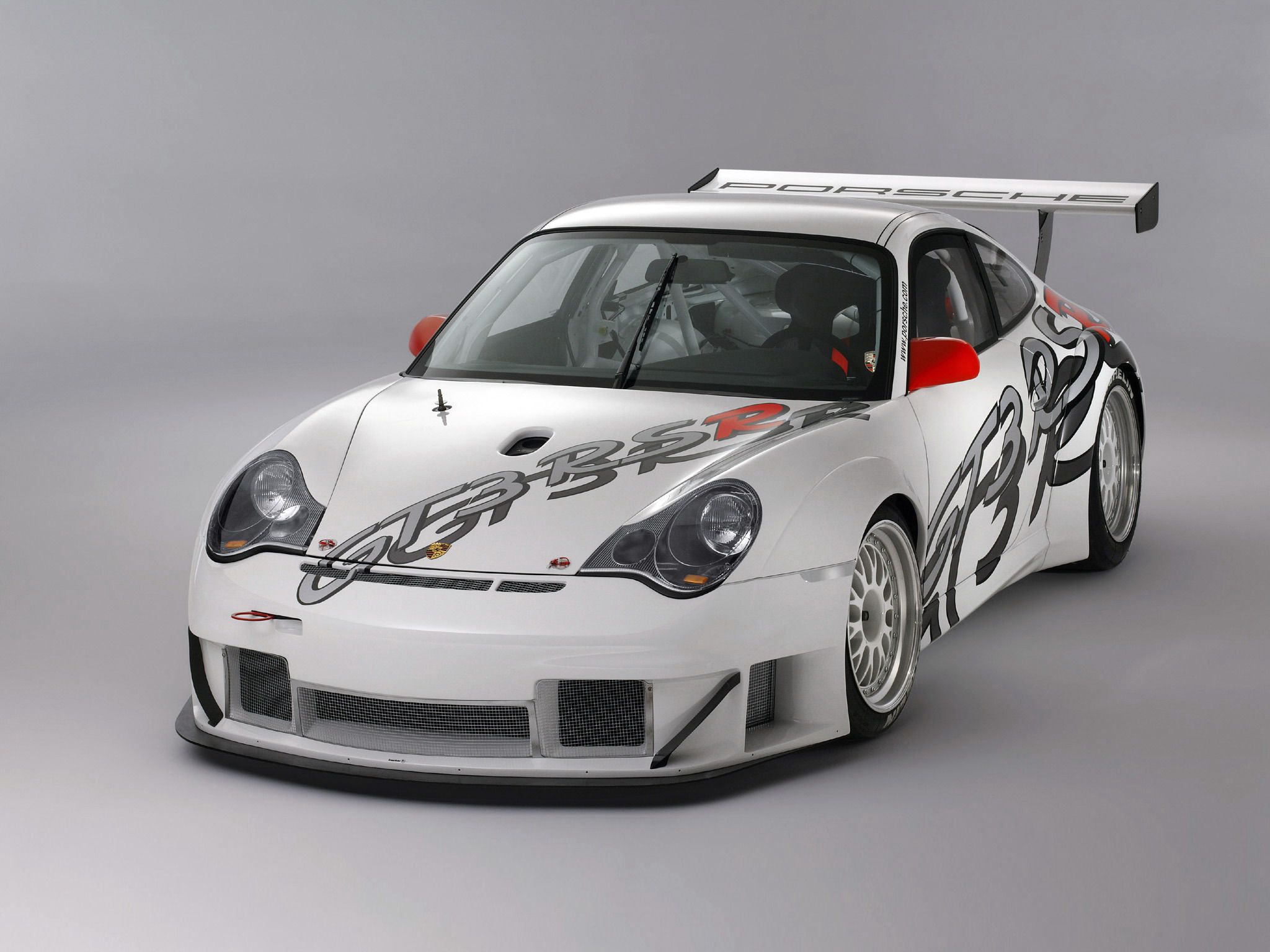Porsche's->ke1 history as a carmaker is seasoned with numerous achievements on both the road and the track, but very few are as celebrated as the introduction of the 911 Carrera RS in 1972. The "RS" badge holds the greatest fascination for both Porsche and sports car->ke506 aficionados, which pretty much explains why Stuttgart revived the nameplate with each new generation of the 911.->ke282
It's been a little more than four decades since the "RS" badge first appeared on a road car, and these naturally aspirated sports cars have evolved tremendously. Today's 2016 Porsche 911 GT3 RS has double the amount of horsepower the original RS had, so 0-to-60 mph sprints have dropped from 6.3 seconds to just 3.1. Downright impressive back in 1972, the RS continues to inspire in 2015 as the main benchmark for track-focused sports cars.
But how did it all start and, more importantly, what made the RS (Rennsport -- German for "racing")->ke447 the world's most venerated sports car nameplate? To answer those questions, I compiled a history of the evolution of the Porsche RS, dating back to 1957, when the iconic 911 wasn't even on "Butzi" Porsche's drawing table.
Continue reading for the full story.
1957-1962 718
RSK/RS 60/RS 61/W-RS
Though many see the 1973 Porsche Carrera RS as the quintessential Porsche RS, the iconic badge dates back to 1957, six years before the original 911 was launched. The RS designation first appeared on the 718. Launched in 1957 as a development of the 550A,->ke1156 the 718 RSK was also an open-cockpit race car.->ke148
Tipping the scales at only 1,260 pounds and using a 1.5-liter, four-cylinder engine, the RSK finished third overall at Le Mans->ke1591 in 1958, won the 1959 Targa Florio, and won the European Hill Climb Championship in both 1958 and 1959. A perfect start for the Rennsport legend.
Porsche developed various versions of the 718 until 1962. The RS 60 was launched in 1960 in response to the changes the FIA made to racing regulations. The 1.5-liter was replaced with a 1.6-liter unit. The RS 60 won the European Hill Climb Championship for the third year in a row, but also captured first place at Targa Florio and the 12 Hours of Sebring in 1960.
The model was renamed to RS 61 for 1961, but remained almost identical to the RS 60. The 718 won yet another European Hill Climb Championship that year, cementing its reputation as the sport's dominant force.
The final iteration of the 718 to wear an RS badge was the W-RS. Introduced in 1961, it used a 2.0-liter four-pot at first and a flat-eight borrowed from the 804 Formula One->ke190 car later in its career. The W-RS was raced until 1964, finishing eighth at Le Mans and winning a new European Hill Climb Championship in 1963. Though it also built a coupe version of the 718, Porsche named it the GTR.
911 Classic
1973-1974 Porsche Carrera RS
As with many legendary high-performance cars for the road, the Carrera RS came to life as a homologation vehicle. It was the first Porsche to actually wear an "RS" badge and the first road car to use the name.
Now considered by many to be the greatest 911 Classic of all time, the Carrera RS featured a 2.7-liter flat-six with 207 horsepower, a stiffer suspension, larger brakes, wider rear fenders and a "ducktail" rear spoiler. Porsche built 1,580 cars, exceeding the 500 that had to be made to homologate the model for the FIA Group 4 class.
Various models followed through 1974, including a limited-run equipped with 2.8-liter engines, and the RS 3.0 with K-Jetronic Bosch fuel injection. Both race-spec RSR 3.0 and RSR Turbo models had successful careers on the track. The RSR Turbo brought Porsche a second overall at the 1974 24 Hours of Le Mans by defeating a more powerful Matra-Simca prototype and a pack of Ferrari 365 GTB/4s,->ke3522 while the RSR 3.0 dominated its class in various events.
The 2.1-liter engine in the RSR Turbo would form the basis of many future Porsche race cars, and it can be regarded as the beginning of the brand's commitment to turbocharging.
As the first competition-based homologation 911, the Carrera RS is undoubtedly the most desirable of air-cooled 911s, and is nothing short of legendary.
1984 911 SC/RS
Although the road-legal Carrera RS was discontinued in 1974, race-spec RSR models continued to appear on European tracks until the late 1970s, when the more powerful 934 and 935 became popular with privateers. The "RS" badge would only return in 1984 for a homologation special commissioned by Rothmans, Porsche's sponsor at the time, for the FIA Group B rally. Dubbed 911 SC/RS, it was based on the 911 SC, but, much like the RS and RSR models before it, it received numerous factory lightweight components, which made the race-spec version 1,000 pounds lighter than the regular SC model.
It also employed performance parts from other race cars, including brakes from the 917, seats from the 935, and suspension components, exhaust headers, clutch, gears, dry sump, front sway bar, and limited slip differential from the RSR. Power was provided by a 3.0-liter flat-six rated at 246 horsepower. In 1984, the SC/RS was Porsche's fastest non-turbo, street-legal car. Production was limited to only 20 units.
911 964 Series
1991-1994 Carrera RS/Carrera RS America/Carrera RS 3.8
1991 saw the return of the Carrera RS with the 964-generation 911,->ke740 the first redesigned 911 since 1963. Like its predecessors, the 964 RS was developed to homologate the new sports car for GT racing and was 10 percent lighter than the regular model at 2,690 pounds.
Notable changes over the standard 911 included an aluminum trunk lid, thinner windows, and removal of sound-deadening materials, underfloor protection, power steering, air conditioning, and cruise control. Additionally, welding points were reinforced and the suspension lowered by 1.6 inches. Two versions were offered: a more track-focused version with racing bucket seats and one with more comfortable sports seats and electric windows.
The 964 Carrera RS was not sold in the U.S. originally, because Porsche felt the car's aggressive tuning was not suited to the American market. However, the Carrera RS did reach U.S. soil in 1992 in a 45-car batch for a Porsche Carrera Cup racing series. The plan was for Andial to convert these cars to full racing specification, but that didn't happen as the series was cancelled due to lack of sponsor support. The 45 cars were then sold quietly through normal dealerships as the "Carrera Cup USA Edition."
The reason Porsche wanted those models to find new homes without any advertising was that the Carrera RS America (RSA) was already underway. Built to meet U.S. demand for the new RS model, the RSA arrived for the 1993 model year with several modifications over the European version, including airbags, electric windows, American lighting and bumpers, 17-inch wheels, a "whale tail" spoiler, and "RS America" logos.
Power for both the Euro-spec and RS America was provided by a 3.6-liter flat-six, but whereas the standard RS was good for 256 horsepower, the U.S. version generated 244 horses.
In 1993, Porsche offered a limited-edition Carrera RS 3.8 model, which came with a Turbo body, additional bumper inlets, and an adjustable, dual rear wing. The 3.6-liter unit was replaced by a 3.8-liter powerplant rated at 296 horsepower. Only 90 units were built, significantly fewer than the 2,282 RS and 701 RSAs that left the factory.
968
1992-1994 968 Turbo RS
Though the RS moniker had become a 911 affair since 1973, Porsche also used it on a race-spec version of the 1992-1995 Porsche 968. Introduced in 1992 as a successor to the 944,->ke927 the 968->ke739 was also included in Porsche's motorsport program with the intention of building a stripped-out version of the Turbo S model for the track.
The Germans built two versions of the 968 Turbo RS. One was built to German ADAC GT specifications and powered by a 332-horsepower engine, while the second one was an international-spec version and used a 345-horsepower unit. Only four were ever produced, making the 968 Turbo RS one of the rarest Porsches ever to leave Stuttgart. The car was raced in 39 events, including the 1994 24 Hours of Le Mans, but failed to score a win or even a podium finish.
911 993 Series
1995-1996 Carrera RS
As the 911 entered a new era in 1993, when Porsche switched from air-cooled to water-cooled engines, so did the RS, But despite using a brand-new engine, the RS remained true to its predecessors as the most extreme naturally aspirated 911. The Germans applied the same recipe as with the outgoing model, removing several convenience features and tuning the chassis and the engine to track-focused configurations.
The standard front seats were replaced with racing units, the rear seats were removed altogether, and the regular door panels were ditched in favor of race-spec lightweight panels. Once again, the RS was incredibly light, at only 2,800 pounds (though a bit heavier than its predecessor).
The 993 Carrera RS also came with a 3.8-liter flat-six under its rear lid (remember, now it was water-cooled), which was good for 296 horsepower and 262 pound-feet of torque. Displacement and horsepower were identical to the 964-based RS 3.8, which cranked out four additional pound-feet. As a result, the 933 Carrera RS was actually a bit slower than the previous RS 3.8 from 0 to 60 mph, needing five seconds to hit the benchmark. The RS 3.8 needed 4.9 ticks. Top speed, however, was four mph higher at 172 mph.
Porsche also offered a Clubsport options for the Carrera RS, which added slightly larger front splitter and rear wing, a full rollcage, six-point seat belts, a battery switch, a fire extinguisher, and bucket seats. Unlike the previous-gen RS, the 993 model wasn't exported to the U.S.
Interestingly enough, the 993 Carrera RS was also significantly more exclusive than the 964-based model, as Porsche built only 1,014 units. By comparison, the 964 Carrera RS sold in just over 3,000 examples (including the RS America and the RS 3.8). This led to more enthusiasts buying standard Carrera models and modifying then into RS replicas.
911 996 Series
2003-2004 Porsche 911 GT3 RS
The late 1990s brought one of the most important changes to the 911 lineup. In 1999, Porsche introduced the GT3->ke617 nameplate, which identified naturally aspirated 911s focused on racing as well as homologation cars.
In essence, the GT3 name replaced the previous RS. As with previous RS models, the new GT3 was devoid of items that added unnecessary weight to the car. However, the "RS" badge wasn't abandoned forever. The moniker returned in 2003 to adorn an ever more radical version of the GT3. The 996 GT3 RS was lighter than the GT3, thanks to a polycarbonate rear window, carbon fiber hood and rear wing, and came with optional, race-spec Porsche Ceramic Composite Brakes (PCCB).
The 3.6-liter flat-six was also slightly different than the GT3's, using reshaped intake and exhaust ports for the cylinder heads. Though Porsche claimed the same 376-horsepower output as the standard GT3, dyno test revealed the GT3 RS was good for nearly 390 horses.
The RS badge also came with revised, stiffer springs and dampers, a lowered suspension, and a reworked rear wing that delivered 77 pounds of downforce at 125 mph. Speaking of performance, the 996 GT3 RS was significantly quicker that its predecessor, being able to sprint from 0 to 60 mph in 4.4 seconds and a hit a top speed of 190 mph.
Visually, the 996 GT3 RS was linked to the original Carrera 2.7 RS by use of blue or red wheels and "GT3 RS" side decals. Only 682 units were built in 2003 and 2004, none of which were sold in the U.S.
2005-2010 Porsche RS Spyder
In 2005, Porsche once again made use of the RS name for a car that wasn't a 911. This time around it was an LMP2-class prototype, which meant the Germans were using the "RS" badge on a non-911 race car for the first time since 1994. Developed in conjunction with Penske for the American Le Mans Series, the RS Spyder (named after the legendary 550 Spyder of the 1950s) remained competitive for no fewer than six years until new LMP2 regulations for 2011 rendered it obsolete. Powered by a 3.4-liter V-8 throughout its career, the RS Spyder went on to win the ALMS LMP2 Championship in 2006, 2007 and 2008, and took class honors at the 24 Hours of Le Mans in 2008 and 2009. Its overall victory at the 2008 12 Hours of Sebring was the first major victory for Porsche in endurance racing for five years and the first time that the non-premier class won the race overall in 24 years.
In all, the RS Spyder scored 13 overall and 22 class wins between 2005 and 2010 and helped Porsche develop both the 918 Spyder supercar and the 919 Hybrid race car. Needless to say, a race car worthy of the RS name.
911 997 Series
2006-2011 Porsche 911 GT3 RS
After a two-year hiatus, Porsche introduced a new GT3 RS, based on the 997-generation->ke509 model, which was an evolution of the 996 and its platform. As with the previous model, the 997 GT3 RS was based on the GT3.
Weight-saving measures included an adjustable carbon-fiber rear wing, a plastic engine cover and a lightweight rear window, which shaved a further 44 pounds from the GT3's 3,075 curb weight. Sporting a Carrera 4 body, the GT3 RS was also wider at the rear than the GT3, sporting a wider track for improved stability and cornering grip.
Power came from a 3.6-liter flat-six based on the 996 GT3 RS', but output was increased to 409 horsepower, making it the first street-legal RS with more than 400 horses. As a result, the 0-to-60 benchmark dropped to only 4.2 seconds, while top speed increased to 193 mph, also a record for the nameplate.
Unlike other RS models, the 997 received an extensive facelift for 2010 that included a new 3.8-liter flat-six good for 444 horsepower. The added oomph enabled the GT3 RS to hit 60 mph in an astounding 3.9 seconds.
The 997 was the first RS to cross the pond to the U.S. since the 964-generation model. The American version was identical to the European car except for the standard rear window (instead of the plastic one) and the smaller 911 fuel tank. The latter was added so the GT3 RS -- still a homologation car -- met rules of SCCA, Grand-Am, and IMSA.
Production of the 997 GT3 RS lasted for five years, making it the longest-running RS in history (the 964 RS was built for four years).
2011 Porsche 911 GT3 RS 4.0
On top of being the quickest, most powerful, and the first RS to arrive stateside since 1993, the 997 was also the first RS to have its engine displacement increased to more than 3.8 liters. Dubbed GT3 RS 4.0, the final evolution of the RS-badged 997 arrived in 2011 with a 4.0-liter flat-six in the rear. The engine featured the crankshaft from the RSR race car, with a longer stroke, a higher-flow air filter, a modified intake manifold with shorter runners, and a less-restrictive exhaust. These updates increased output to 493 horsepower and 339 pound-feet of torque, which meant the RS 4.0 had 49 horsepower and 22 pound-feet over the GT3 RS and as much horsepower as the 911 Turbo.
The GT3 RS 4.0 set yet another benchmark for the RS, achieving the 0-to-60 mph sprint in only 3.8 seconds, a tenth quicker than the GT3 RS. Top speed, on the other hand, was maintained at 193 mph.
The GT3 RS 4.0 was also the most expensive naturally aspirated 911 at $185,950, but that didn't stop Porsche from selling all 600 units in a matter of weeks.
2011 Porsche 911 GT2 RS
The GT2 RS was yet another race car for the road, and made the 997-generation 911 the most complete lineup in history. Launched with the 993 Series as a homologation car, the GT2 was the RS/GT3's mean, turbocharged brother. New models were developed for both 996- and 997-generation 911s, but it was only the latter that received an RS version. Just like the GT3 RS was to the GT3, the GT2 RS was a more track-focused and powerful version of the GT2.
Updates included revised underpinnings and weight-saving measures (it was 150 pounds lighter than the GT2), but the GT2 RS' most impressive feature was its uprated twin-turbo, 3.6-liter, flat-six powerplant. Massaged to deliver a remarkable 612 horsepower and 516 pound-feet of torque, the turbo-six made the GT2 RS 89 horsepower and 16 pound-feet more powerful than the standard GT2.
The RS charged to 60 mph in 3.4 seconds and up to a top speed of 205 mph. At the time of its introduction, the GT2 RS was the quickest and most powerful street-legal Porsche.
In 2010, it lapped the Nurburgring->ke999 in 7:24 minutes, becoming the seventh-quickest production car around the track. As of 2015, it's the second fastest Porsche on the "Green Hell," having been surpassed only by the 2014 Porsche 918 Spyder.
Only 500 units were produced, and each sold for the equivalent of $245,000 before options. To this day, the 997 GT2 RS remains the last GT2-badged 911 built.
911 991 Series
2016 Porsche 911 GT3 RS
Though Porsche has yet to confirm whether it will revive the GT2 and GT2 RS anytime soon, the 991-generation->ke1920 911 brought us the most revolutionary GT3 yet. Innovations include active rear-wheel steering, an electronically controlled, fully variable rear differential lock, and an all-aluminum chassis. All these features are also available with the latest GT3 RS, launched at the 2015 Geneva Motor Show.->ke228
Unlike previous RS models, the new GT3 RS came with Turbo-like intakes on the rear fenders. When first spotted on prototypes, these intakes sparked rumors that the GT3 RS could adopt turbocharging. The production model, however, arrived with a naturally aspirated flat-six, much to the delight of RS aficionados.
However, instead of using an updated version of the GT3's 3.8-liter for the RS too, Porsche created a new 4.0-liter unit, like it did with the GT3 RS 4.0 in 2011. The powerplant cranks out 493 horsepower and 339 pound-feet of torque, which represents a 25-horsepower increase over the GT3 and a 50-horsepower improvement when compared to the previous GT3 RS.
Interestingly enough, the new model is on par with the GT3 RS 4.0 version of the 997-generation 911 in terms of power and torque.
Another premier for the GT3 RS (as well as the standard GT3) is that the sports car is now available with a PDK transmission only, whereas the previous models were restricted to manual gearboxes. The combo enables the GT3 RS to hit 60 mph in only 3.1 seconds, more than a half second quicker than the previous GT3 RS 4.0. With such impressive figures at hand, I can't help but wonder what will the next GT3 RS bring...
Motorsport Success In The 911 GT3 Era
Not just a fantastic road car, the 911 RS of the GT3 era was also (and continues to be) a very successful race car. On European and U.S. tracks since 1998, various race-spec version of the RS, most notable the RSR, have scored numerous outright and class wins. Highlights include six overall victories at the 24 Hours of Nurburgring, two overall wins at the Spa 24 Hours, and an outright win at the 24 Hours of Daytona. RS-badged 911s also dominated the GT category at the 24 Hours of Le Mans, taking seven consecutive class wins from 1999 to 2005.

